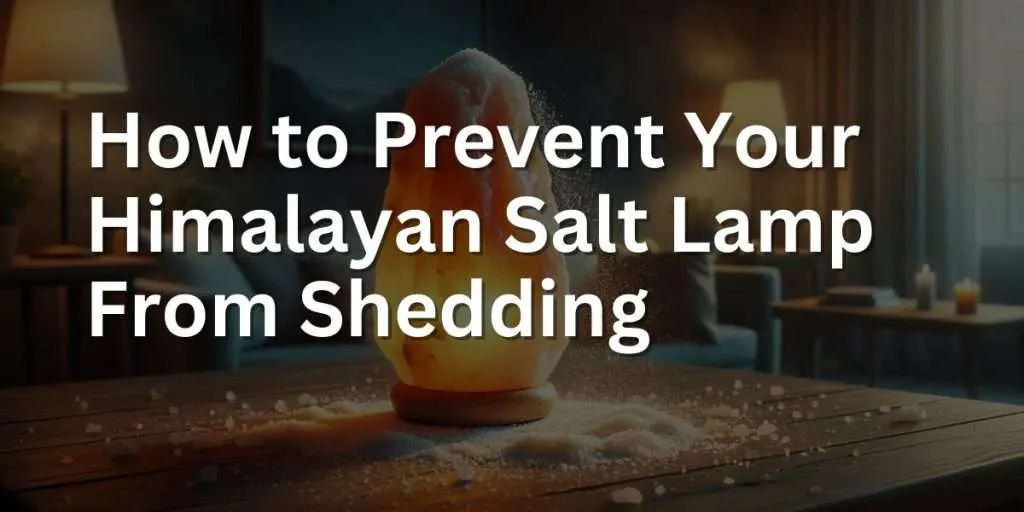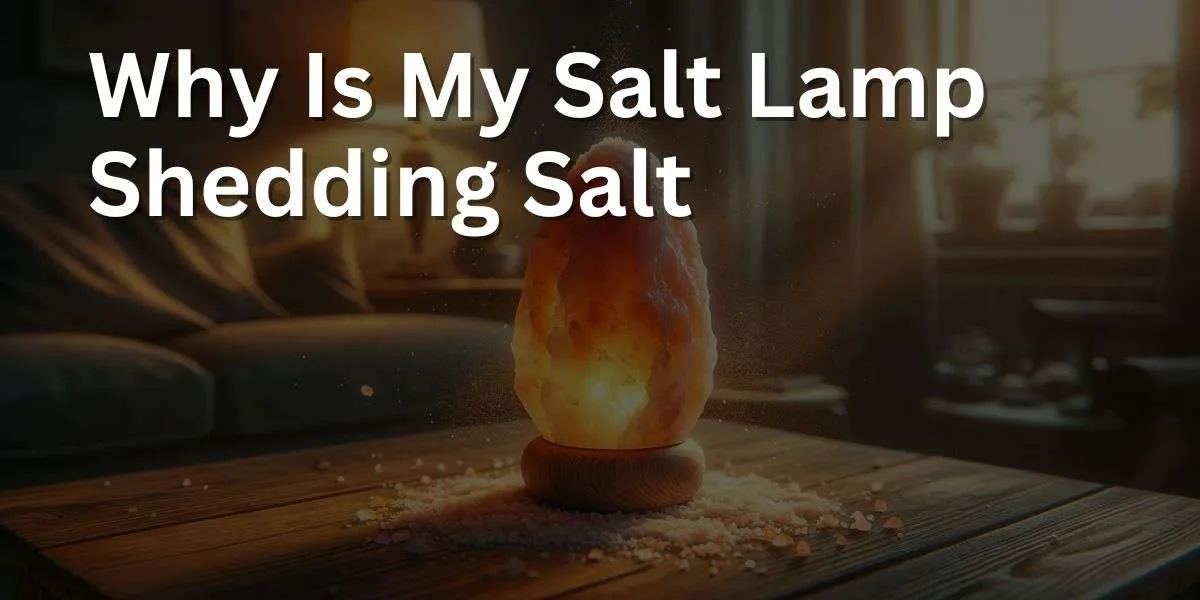If you find yourself asking, “Why is my salt lamp shedding salt?” you’re not alone. It’s a common characteristic of Himalayan salt lamps that can cause both curiosity and concern.
In this article, we’ll uncover the reasons behind this natural phenomenon. From the hygroscopic nature of salt to the environmental factors of your room, various elements play a part in why your salt lamp may be losing grains or even larger chunks.
We’ll also provide you with tips on how to manage and minimize shedding, ensuring your salt lamp remains a beautiful and beneficial addition to your space. Join us as we explore the science of salt lamps and how to care for them properly.
They give off a warm, calming glow and make us feel like we’re doing something good for our health (even though we’re not really sure why).
But there’s one sad truth about Himalayan salt lamps that we have to face:
Salt Lamps don’t last forever. In fact, if you use your salt lamp regularly, it will probably only last for a few months before it starts shedding its salty skin.
Key Takeaways: Reasons for a Salt Lamp Shedding Salt
Natural hygroscopic nature. Salt lamps attract moisture from the air, which can cause the surface to become damp and shed salt when the moisture evaporates.
High humidity environment. Placing a salt lamp in an area with high humidity, such as near a shower or in a basement, can lead to increased moisture absorption and subsequent “weeping” or shedding.
Lack of use. If the lamp isn’t turned on regularly, the light bulb within doesn’t generate enough heat to prevent moisture accumulation on the lamp’s surface.
Temperature fluctuations. Sudden changes in room temperature can cause condensation on the surface of the salt lamp, which may result in salt shedding as it dries.
Improper curing. Some salt lamps may not have been properly cured, or dried out, before being sold, which can make them more prone to shedding salt.
What causes a salt lamp to shed salt?
Salt lamps are made from chunks of salt, usually sourced from the Himalayas. As salt is hygroscopic, meaning it absorbs moisture in the air, salt lamps will naturally shed some of their salt crystals over time. This is why they need to be frequently wiped down.
The shedding of salt from a salt lamp is usually caused by the following factors:
1. Humidity: Salt lamps absorb moisture in the air, so the higher the humidity levels, the more likely it is that your salt lamp will shed its crystals.
2. Room Temperature: If you keep your room temperature too high or too low, this can cause your salt lamp to sweat and shed more crystals.
3. Vibration: If your salt lamp is not firmly placed on a stable platform, it could be exposed to vibrations which can cause the salt crystals to fall off.

How to Prevent Your Himalayan Salt Lamp From Shedding
Fortunately, there are some things you can do to prevent your salt lamp from shedding.
To prevent your salt lamp from shedding its crystals, make sure to keep the humidity levels in the room low and maintain a moderate temperature. You can use higher wattage bulb to help evaporate the moisture.
Here are four tips:
- Store Your Salt Lamp in a Cool, Dry Place Away from Direct Sunlight or Heat Sources. This will help prolong its lifespan and keep it from shedding as much. See our guide to where to place your salt lamp for the best advice.
- Be sure to follow the manufacturer’s instructions carefully and use appropriate salt lamp bulbs. If your light bulb is too low it may allow moisture to build up on the lamp. If the bulb is too hot, it can cause the salt to melt and fall off.
- Avoid handling your salt lamp too much. The more you handle it, the more likely it is to shed.
- Clean your pink salt lamp regularly with a soft cloth or brush to remove any build-up of salt on its surface.
- If you find your salt lamp leaking water or shedding its crystals, it could be a sign of too much humidity in the air. Try using a dehumidifier to reduce moisture and see if that helps.
By following these simple tips, you can help prevent your salt lamp from shedding and enjoy its benefits for many years to come!
To prevent your salt lamp from shedding, store it in a cool, dry place away from direct sunlight or heat sources.
Why You Shouldn’t Feel Guilty If Your Salt Lamp Sheds
So if your salt lamp sheds from time to time, don’t beat yourself up about it. It’s really not a big deal (and it’s certainly nothing to feel guilty about). Even the best Himalayan salt lamp will be a moisture absorber and will shed.
Sure, nobody likes having bits of salt scattered around their home – but it’s really not that difficult to clean up.
Just wipe down the inside of the lamp with a damp cloth.
FAQs in Relation to Why Is My Salt Lamp Shedding Salt
Should my salt lamp shed salt?
No, your salt lamp should not be shedding salt. If it is, then there’s something wrong and you need to take action. There could be several causes for this issue, from too much humidity in the room to being placed near a heat source.
How do you keep salt lamps from shedding salt?
The most common cause of salt lamp shedding is too much humidity or excess moisture in the room. Salt lamps need to be kept in a dry environment, so if your home has high levels of humidity, you may want to consider using a dehumidifier or air conditioning to reduce the moisture content in the air.
You should also avoid placing your salt lamp near a window, as the condensation from outside can cause shedding.
You should also make sure that your salt lamp is not too close to any heat source, such as a radiator or heater. The heat will cause the salt crystals to absorb moisture and then shed more quickly. If you have to place it near a heat source, make sure to keep it at least one foot away from the source.
You should also clean up any spilt salt quickly and easily with a damp cloth. Make sure to vacuum the area thoroughly afterwards to remove any remaining particles of salt.





